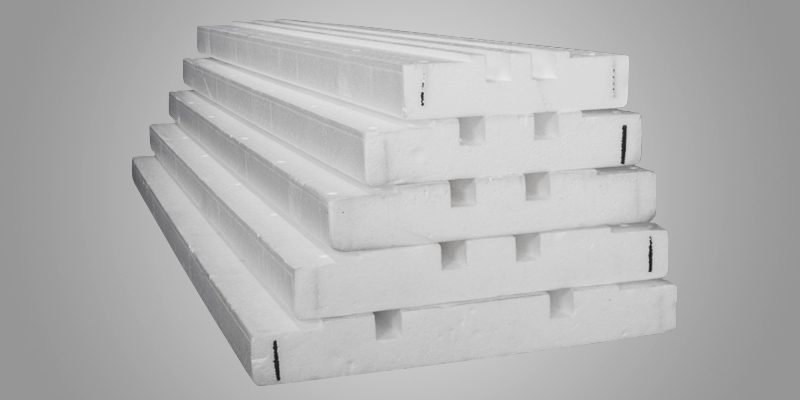The clear R‑Value of an Fox Blocks is R22, however current Energy codes recognize the lack of thermal bridging in an ICF and the contribution of the mass concrete on the influence of the thermal performance. Whole wall calculations indicate a Fox blocks wall assembly provides an R24 rating.
The continuous double layer (inside and outside) of insulation, the elimination of thermal bridging and minimal air infiltration through the mass concrete wall assembly, allows Fox Blocks walls to performance in the high performance wall assembly category. Completing the envelope with energy efficient windows and doors and roof insulation, Fox Blocks homes can easily meet and exceed energy code requirements and exceed the minimum requirements for Energy Star and EnerGuide. A Fox Blocks structure requires 44% less energy to heat and 32% less energy to cool.





ICFs provide a reinforced concrete wall which is designed to specific engineering principles. Typical residential construction, per the applicability limits in the building code, allows walls 10′ (3 m) high or less between lateral supports (floor and roof connections). Below grade walls must have a minimum 6″ (150 mm) concrete core. In some regions, an 8″ (200 mm) concrete core is the minimum allowed thickness for below grade walls.
The 4″ (100 mm) form cannot be used below grade as a foundation wall. The 4″ (100 mm) form may be used for above grade walls up to a maximum of 10′ (3.0 m).
The 6″ (150 mm) form, above grade, is limited to approximately 14′ (4.2 m) in height. Walls higher than 14′ (4.2 m) must use an 8″ (200 mm) or larger form.
Typical residential construction will use 6″ or 8″ concrete core size blocks. Project specific engineering may allow for some core thickness to span vertically higher than these proposed guidelines.